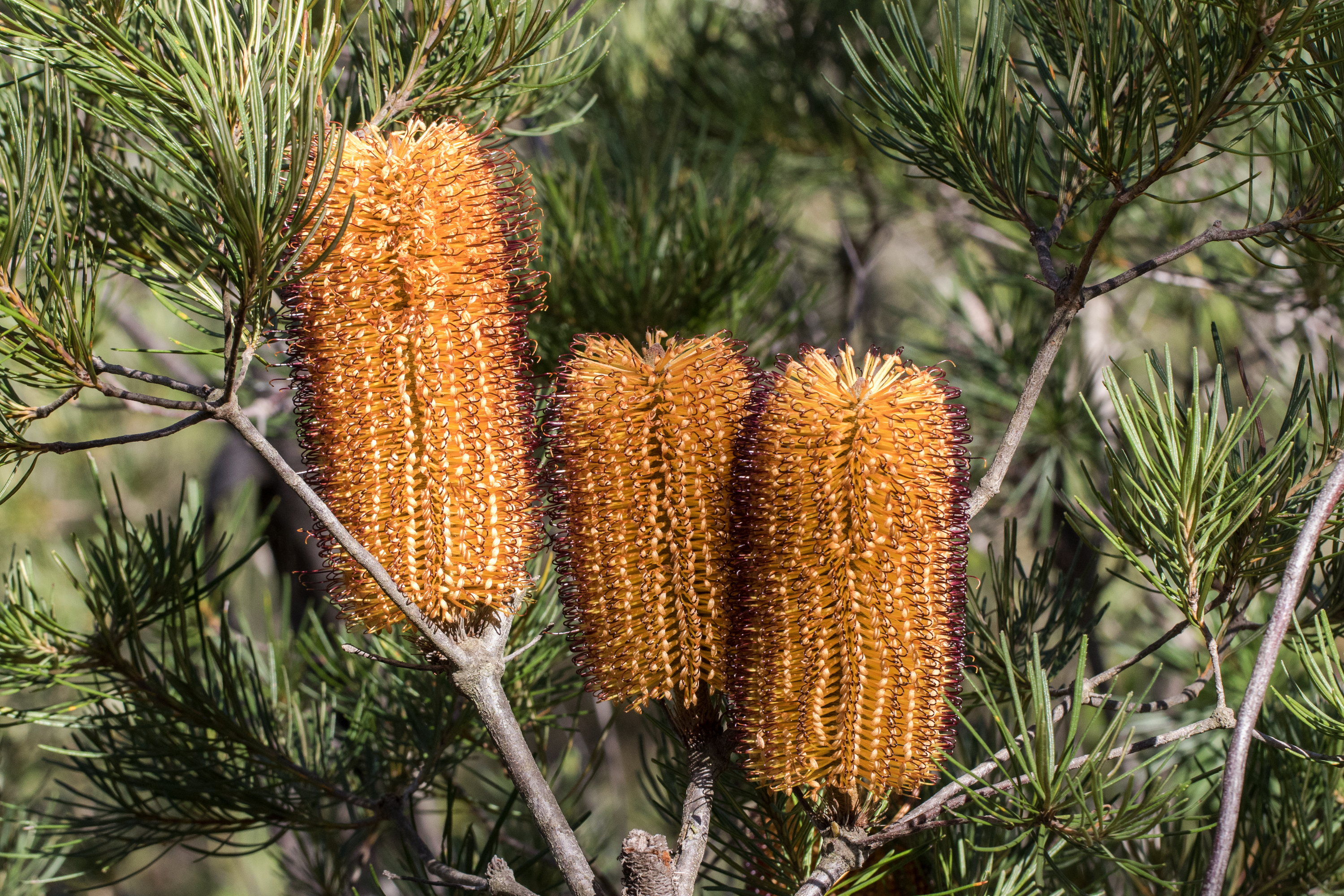Hairpin banksia
(Banksia spinulosa)

Description
Banksia spinulosa, the hairpin banksia, is a species of woody shrub, of the genus Banksia in the family Proteaceae, native to eastern Australia. Widely distributed, it is found as an understorey plant in open dry forest or heathland from Victoria to northern Queensland, generally on sandstone though sometimes also clay soils. It generally grows as a small shrub to 2 metres (7 ft) in height, though can be a straggly tree to 6 metres (20 ft). It has long narrow leaves with inflorescences which can vary considerably in coloration; while the spikes are gold or less commonly yellowish, the emergent styles may be a wide range of colours – from black, purple, red, orange or yellow. Banksia spinulosa was named by James Edward Smith in England in 1793, after being collected by John White, most likely in 1792. He gave it the common name prickly-leaved banksia, though this has fallen out of use. With four currently recognised varieties, the species has had a complicated taxonomic history, with two varieties initially described as separate species in the early 19th century. A fourth, from the New England region, has only recently been described. However, there has been disagreement whether one, var. cunninghamii, is distinct enough to once again have specific status. The pre-eminent authority on Banksia, Alex George, concedes there is still more work to be done on the Banksia spinulosa complex. The hairpin banksia is pollinated by and provides food for a wide array of vertebrate and invertebrate animals in the autumn and winter months. Its floral display and fine foliage have made it a popular garden plant with many horticultural selections available. With the recent trend towards smaller gardens, compact dwarf forms of Banksia spinulosa have become popular; the first available, Banksia 'Birthday Candles', has achieved a great deal of commercial success and wide recognition, and has been followed by several others. The hairpin banksia usually occurs as a multi-stemmed lignotuberous shrub 1–3 metres (3.3–9.8 ft) tall and 1–2 metres (3.3–6.6 ft) across. Alternatively, it may be single-stemmed and lacking a lignotuber, in which case it is often taller, up to 5 metres (16 feet) high. It has grey or grey-brown smooth bark with lenticels. The long, narrow leaves are 3–10 cm (1.2–3.9 in) in length, 1–8 mm wide and more or less linear in shape.
Taxonomic tree:







